Stunning New Image of the Center of Our Galaxy Gives Clues About Its Evolution
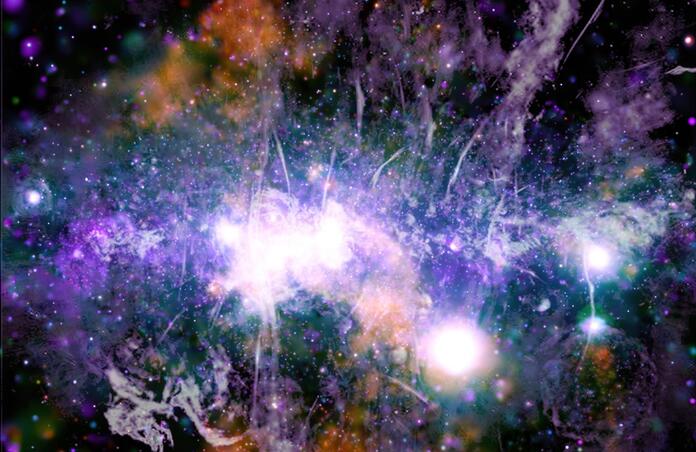
Centres of galaxies are very dynamical environments, at high temperatures and density, and play a key role in a galaxy’s evolution. To understand our own galaxy is already rather tricky: the gas and dust between us and the centre prevents observations at visible wavelengths. With the Chandra X-ray space telescope and the South African MeerKAT radio observatory, astronomers were able to pierce into the galactic centre. The stunning new image they produced reveals multiple features that hint at a new phenomenon.
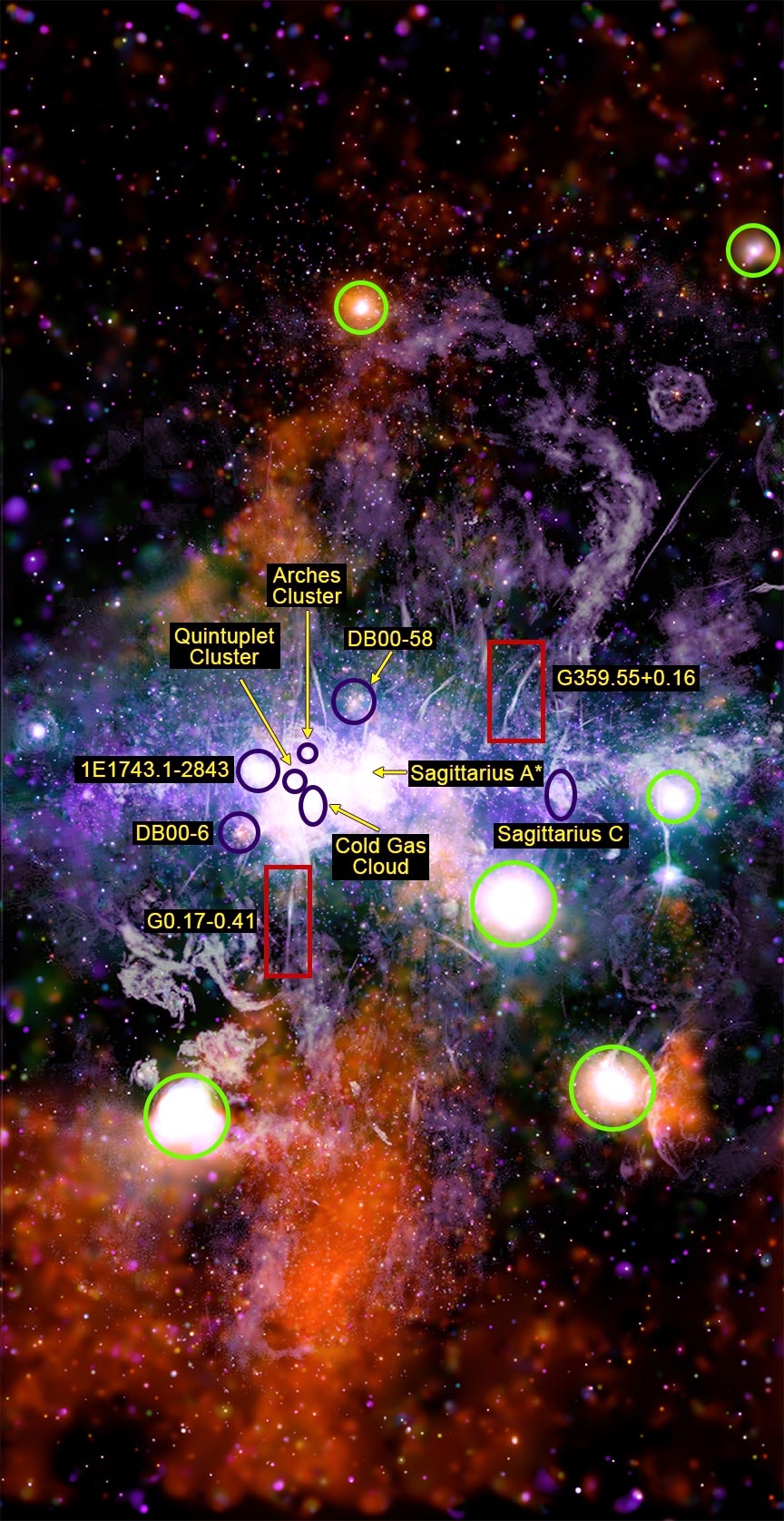
Green: bright X-ray sources ; Blue: Star clusters, molecular clouds and black hole Sagittarius A*
A first observation is that of huge X-ray emitting plasma plumes (A in the figure below), which had been detected previously but are now covered at much higher resolution. Extending for over 700 light years above and below the galactic plane, they seem to link the galactic centre to more diffuse X-ray emitting zones at larger scale (B in the figure). The South plume also appears to be enclosed by a radio lobe (part C of the figure), a structure that could be understood with the presence of magnetic fields.
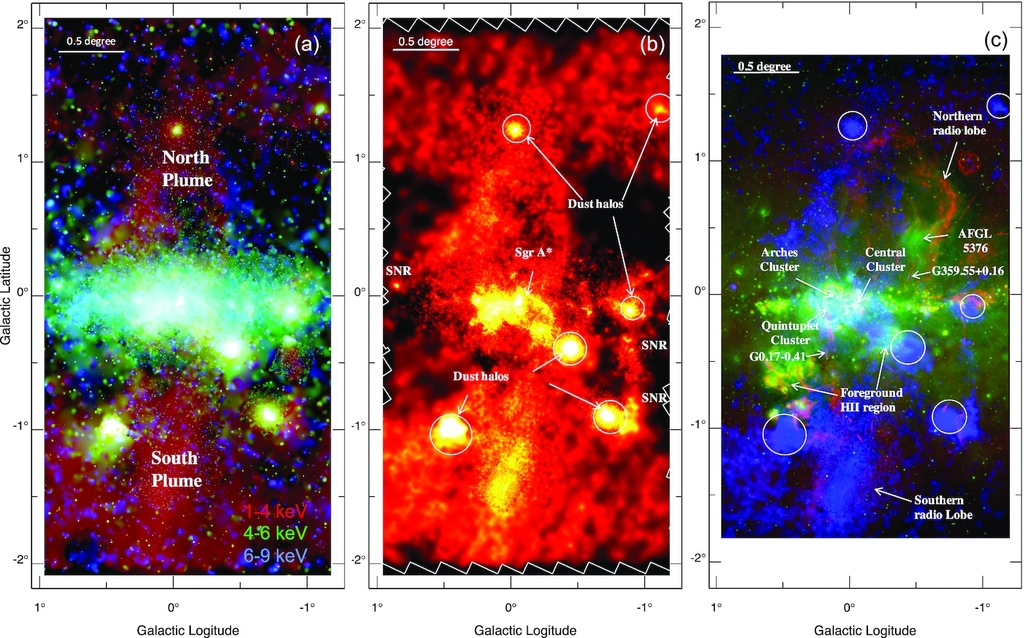
A further hint at magnetic events is the presence of superheated X-ray threads like G0.17-0.41. They are thought to be evidence for magnetic field reconnection events, which is a violent process happening when two opposing magnetic fields are forced to combine. It is similar to what happens when we see auroras: solar flares collide with the Earth’s own magnetic field. At the galactic scale, these magnetic reconnections are thought to especially occur at the outer boundaries of the plumes, heating interstellar space even beyond the galactic centre. Other effects could include the formation of cosmic rays by accelerating particles, and even produce turbulence that triggers star formation in giant molecular clouds – as you can see on the image, there are many star clusters near the dynamical galactic centre: the Arches and Quintuplet Clusters, DB00-58 and DB00-6. The role that magnetic fields and associated high-energy events play in distributing energy and regulating the structure of the Interstellar Medium (ISM) is complex and far from figured out, yet it seems to be key in explaining how our Milky Way works.
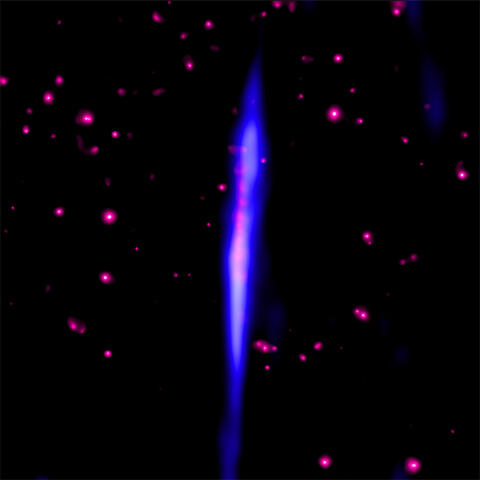
Detailed view of thread G0.17-0.41 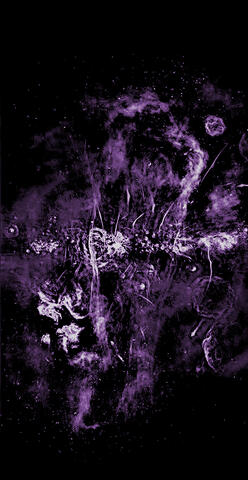
Radio view of the galactic centre, revealing the complex dynamics
Speaking of interstellar mechanisms, recent news from the Voyager 1 probe have mentioned the presence of a narrowband plasma wave – Voyager 1 is able to evaluate the density of the ISM by measuring the frequency of oscillations of the ISM’s plasma. These oscillations are typically caused by shock waves produced by the Sun during coronal mass ejections, which are releases of enormous amounts of plasma from the solar corona. What is surprising about that narrowband wave is that it seems to be continuous throughout the material Voyager journeys through, suggesting that it doesn’t come from a solar shock wave but rather that this oscillation is caused by processes intrinsic to the ISM. You can listen to Voyager’s plasma sound recordings here, and it is from such sound files that the unexpected, continuous signal was found. Rather than measuring properties of the ISM as it is modified by solar activity, this opens up the possibility for Voyager to directly determine fundamental properties of the ISM.
The ISM is a very complex environment, but thanks to direct probes like Voyager that have reached it, astronomers are finding out more about its properties.
Cover Image and Image 1: X-ray: NASA/CXC/UMass/Q.D. Wang; Radio: NRF/SARAO/MeerKAT
Image Credits:
2 - Fig. 1, Q.D. Wang, Monthly Notices of the Royal Astronomical Society, Volume 504, Issue 2, June 2021
3 - G0.17-0.41, NASA/CXC/MeerKAT
4 - Galactic centre, NRF/SARAO/MeerKAT
